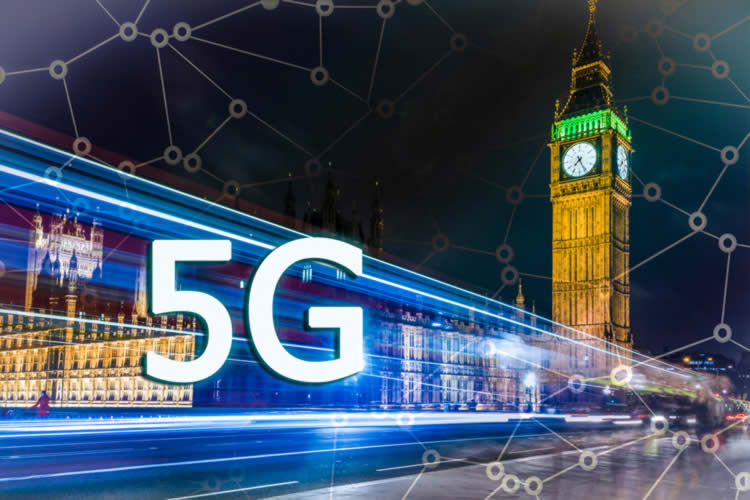

5G is about to land in the UK and it’s all set to take over from 4G as the mobile network standard of choice. But what exactly is 5G? And how fast is it really?
We’ll answer those questions below, along with looking at the other advantages 5G has, exactly when it’s coming, and what you’ll need to get started.
So read on, and get ready to get 5G.
|
In this guide |
Just as 4G stands for the fourth generation of mobile network, so 5G means the fifth generation of mobile network.
What it doesn’t refer to is any one piece of technology. While 4G has become virtually synonymous with LTE, there’s no equivalent network standard that’s set to define 5G in quite the same way.
Rather, 5G has come about through a whole range of complementary (and even competing) technologies. Indeed, 5G is often referred to as the “network of networks,” because it’s going to be made up of a number of overlapping network standards and formats, including legacy 4G technology.
Despite this, one key technological component of 5G will be the use of multiple smaller antennas dotted around on buildings and street furniture, rather than a few large stand-alone masts. These are known as small cells, and will be used to extend coverage and increase bandwidth.
The most obvious benefit of 5G over 4G will be its speed. Regular 4G can hit around 100Mbps in peak conditions, while current advanced 4G networks (such as EE’s LTE-A) can offer speeds of up to 300Mbps.
5G speed estimates are varied, but initially it may be able to offer speeds in excess of 1Gbps (1000Mbps) - so three to four times higher than advanced 4G and ten times faster than regular 4G.
EE for its part has said to initially expect average 5G speeds of around 100-150Mbps more than 4G can manage, with top-end speeds of over 1Gbps.
And that’s just for 5G’s early rollout. Many experts think that 5G could conceivably ultimately hit speeds of 10Gbps (10000Mbps). That’s around 30 times faster than current advanced 4G (4G+, LTE-A, 4.5G etc.) and 100 times faster than regular 4G.
But 5G isn’t purely about speed. Its capacity will be just as important, and that’s something that 4G really struggles with.
4G simply doesn’t have the bandwidth to sustain and grow a modern super-connected world. The limited frequencies it operates in act as a bottleneck to mobile data traffic, leading to limitations in connectivity, speed and response times.
5G will exploit new, higher frequencies with much greater capacity for such traffic. Most notable will be the use of millimetre wave, which is the band of spectrum between 30Ghz and 300Ghz.
Besides simply having far more space to operate in, 5G will use that extra headroom far more intelligently and efficiently than 4G.
A technique called network slicing will enable distinct virtual networks to be carved out, while the 5G network will also smartly scale its resources according to the use case - whether that’s a solitary Netflix streamer or a multi-terabyte office.
The other issue with current 4G is latency. You can think of this in practical terms as the length of time between you pressing a web link on your smartphone and the amount of time it takes for that command to be recognised and acted upon by the relevant host server.
At present, mobile network latency is way below that of fixed broadband. We’re talking around 40-50 milliseconds (ms) for 4G. That compares to between 10ms and 20ms for a decent FTTC (fibre to the cabinet) UK broadband connection, while a top FTTP (fibre to the premises) connection can get down into the low single digits.
This explains why surfing the web on even a fairly strong 4G connection doesn’t feel as snappy and responsive as it does on a decent fixed broadband connection.
It’s expected that 5G will be able to attain a near-instantaneous 1ms, which will enable next-generation applications such as driverless cars and remotely operated robotics.
EE is switching on its 5G service on May 30th, 2019, so by the time you read this it might already by active.
Initially 5G from EE will only be available in parts of London, Cardiff, Belfast, Edinburgh, Birmingham and Manchester, with parts of Glasgow, Newcastle, Liverpool, Leeds, Hull, Sheffield, Nottingham, Leicester, Coventry and Bristol set to get EE 5G throughout the rest of 2019.
Vodafone looks like it will be second to launch a 5G network, with a switch-on date planned for July 3rd in Birmingham, Bristol, Cardiff, Glasgow, Manchester, Liverpool and London.
Then, parts of Birkenhead, Blackpool, Bournemouth, Guildford, Newbury, Portsmouth, Plymouth, Reading, Southampton, Stoke-on-Trent, Warrington and Wolverhampton will get it later in 2019.
Three and O2 haven’t yet given a launch date beyond sometime in 2019, but O2 has said it will initially bring 5G to Belfast, Cardiff, Edinburgh and London.
So in other words all four of the UK’s main networks should have a 5G service by the end of 2019, with some landing imminently. However, coverage isn’t likely to become widespread until a couple of years after that.
Smartphones will need dedicated 5G modems to access the network’s new higher frequencies, which in all likelihood means your current smartphone won’t do the trick (unless you’ve recently bought a 5G phone).
The good news is that we’re now starting to see 5G phones arrive. The likes of the Samsung Galaxy S10 5G, OnePlus 7 Pro 5G, Xiaomi Mi Mix 3 5G, LG V50 ThinQ and a number of others all support 5G and are either available or coming soon.
Most early 5G handsets use Qualcomm’s Snapdragon 855 chipset, coupled with its X50 5G modem.